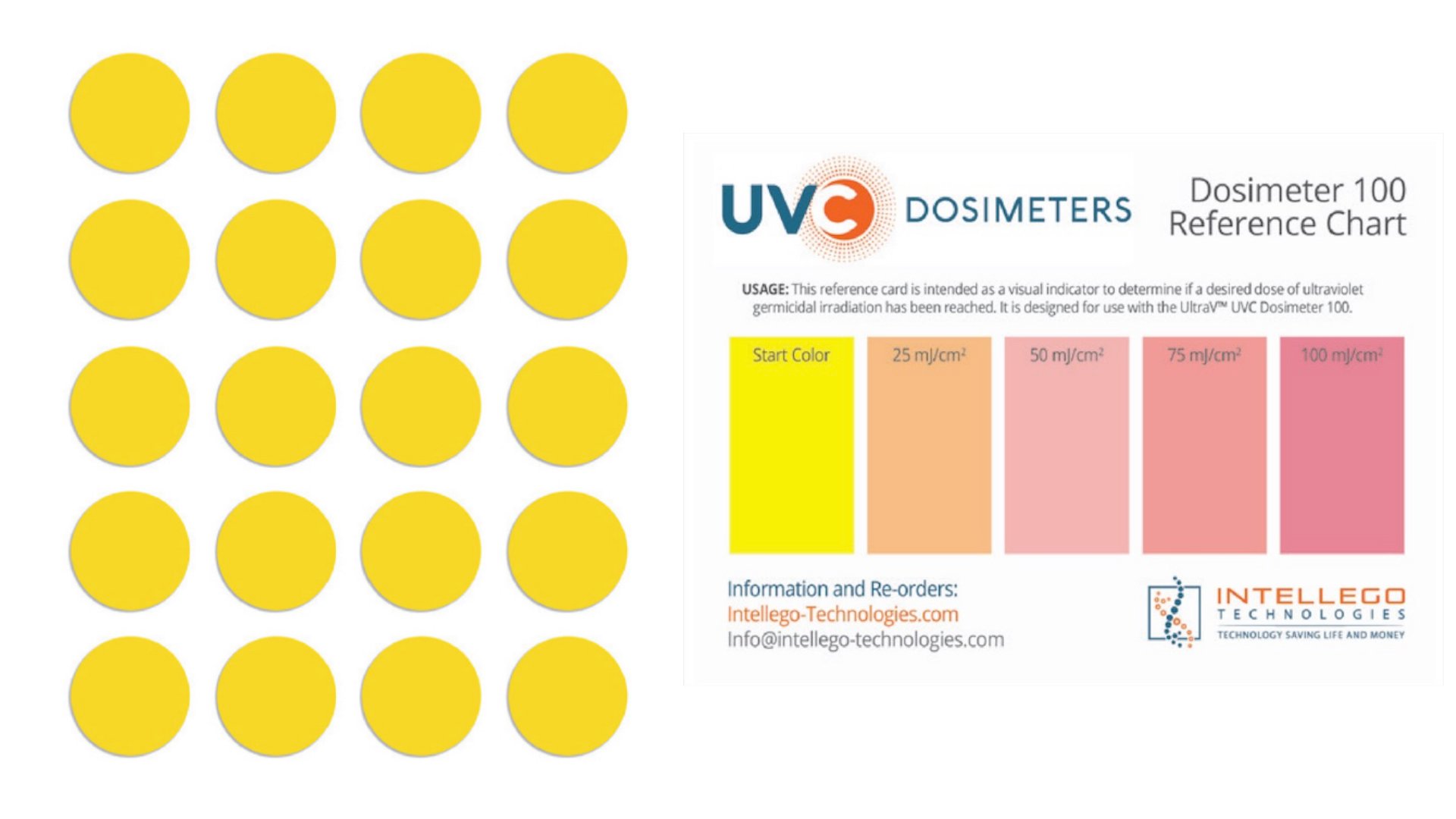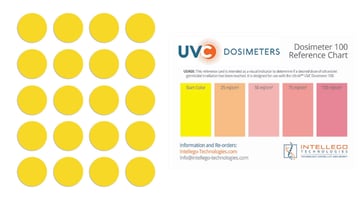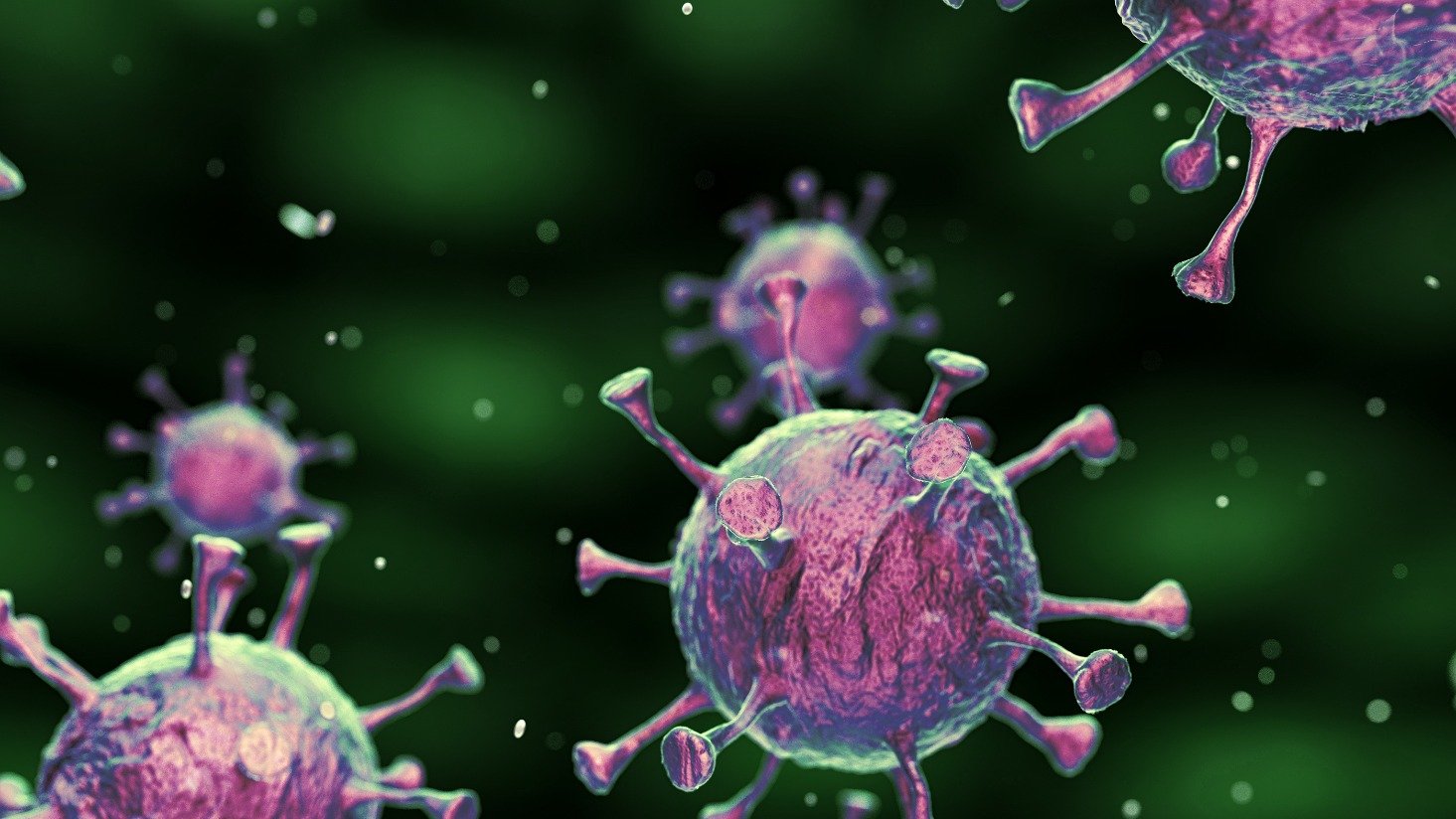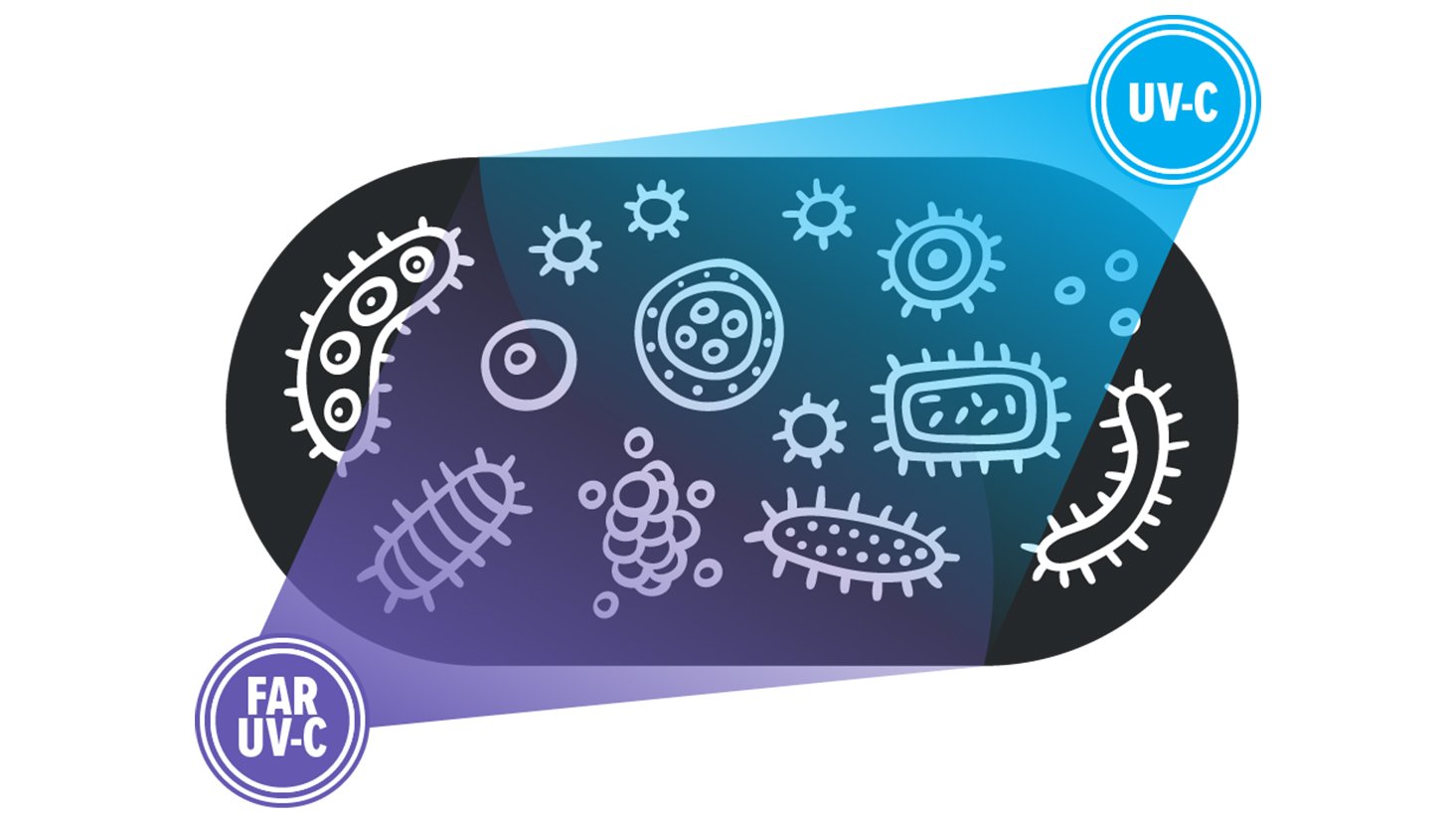What is a UVC dosimeter?

You bought a new UV product or series of products and you're ready to disinfect your building. But how do you know if the products you spent thousands of dollars on really work?
There are several ways to test the efficiency of UV products, but the UVC dosimeter is a relatively inexpensive but highly effective option.
How a UVC dosimeter works
A UVC dosimeter is placed in a room or area before a UV cycle begins.
During the run cycle, the UVC dosimeter changes color at various energy levels. The color change correlates to different doses of UV, or different levels of UV exposure at certain log reduction rates.
The doses are known to kill a variety of pathogens, like viruses and bacteria.
But how exactly does a dosimeter change color? The center of the dosimeter is photo-chromatic ink that changes color when it is stimulated by certain UVC radiation.
The color changes from yellow to orange to pink based on the UVC dose received.
It's important to note the center of the card only changes color with the traditional 254 nm wavelength. Other sources of UV energy like LED UVC, far-UVC, or pulsed-xenon UVC will not register properly.
Why UVC dosimeters are important
UVC dosimeters give you a good measurement for a room or area where you are running a disinfection cycle.
UVC dosimeters:
- Help you achieve a target dose. A dosimeter will tell you if you hit the dose you want. That can help you increase disinfection levels to create an overall cleaner environment.
- Help commission a new fixture. If you're setting up a new UV-C fixture, use a dosimeter to ensure UV energy is hitting the surfaces you want.
- Notify you when it's time to change a fixture or bulb. By keeping a record of run cycles, you will be able to tell when output of a fixture or bulb is lower and should be either replaced or updated.
- Decrease disinfection time. You may reach your desired disinfection level quicker than you think. Using a dosimeter card may help shorten the disinfection cycle, saving you time.
- Make sure UV-C reaches everywhere. You want all of your surfaces covered. Place a dosimeter in a hard-to-reach area to make sure it's getting the desired disinfection.
- Increase overall disinfection process. By creating cleaner, safer surfaces, you are cutting down on the number of infections in a space. Dosimeters help reduce hospital acquired infections and surgical site infections in hospitals.
Types of UVC dosimeters
There are several different types of UVC dosimeters.
The best option for you and your building depends on your application and the results you are trying to track.
UVC dosimeter cards
There are two different types of UVC dosimeter cards: two-color and tri-color.
To use the cards, you place them on high-touch surfaces in a room before a disinfection cycle starts. The yellow circle in the center of the cards will change color depending on the amount of UV energy the surface receives.
After the cycle is over, you will be able to see the results. A best practice is to take a picture of the cards after a cycle. This will help you keep a good record of the cycle and verify future results.
1. Two-color UVC dosimeter cards
The two-color UVC dosimeter card has two reference points, 50 mJ/cm2 and 100 mJ/cm2.
The orange circle on top references 50 mJ/cm2 and the pink circle on the bottom corresponds to 100 mJ/cm2.
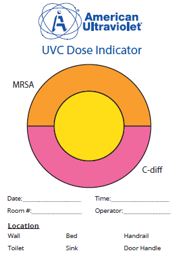
Some cards designed for medical use will say "MRSA" and "C-diff" because a dose of 50 mJ/cm2 is enough to kill MRSA, while a dose of 100 mJ/cm2 is enough to kill C-diff. Both MRSA and C-diff are traditionally very hard to kill.
2. Tri-color UVC dosimeter cards
The tri-color UVC dosimeter card has three color references instead of two, including 25 mJ/cm2, 50 mJ/cm2, and 100 mJ/cm2.
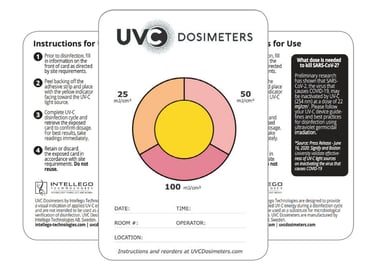

You may want to use the tri-color card instead of the two-color card if you only need to reach a dose of 25 mJ/cm2.
In many applications outside of healthcare, this dose is high enough to inactivate most viruses and kill a majority of bacteria at a 99.9% log reduction.
UVC dosimeter dots
UVC dosimeter dots are small, adhesive stickers that measure UVC output. These dots are convenient because they stick on a variety of surfaces.
The UVC dosimeter dots also help you detect a more specific dose. Each pack of dots comes with a reference card, which has various dose levels.
After a run cycle is complete, you compare the color of the dots to the reference card. This will tell you if the dose received on the surface is closest to 25 mJ/cm2, 50 mJ/cm2, 75 mJ/cm2, or 100 mJ/cm2. This change correlates with a log reduction of different microbiology samples.
The UVC dots can be used in many different environments like hotels, restaurants, and manufacturing and processing facilities.
The dots change color in real time. You can record these results to keep for validation purposes. They can also tell you when it's time to replace your UV bulbs or fixtures.
UVC personal exposure dosimeters
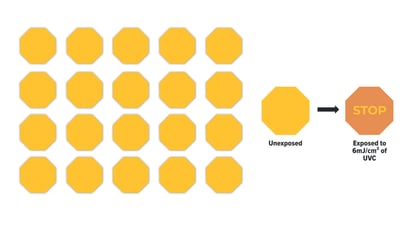
UV-C rays in the 254 nm wavelength are harmful to our skin and eyes. When you're using or maintaining a UV product, how can you be sure you or visitors to your building aren't accidentally exposed?
Personal Exposure dosimeter stickers measure exposure up to the daily Threshold Limit Value, which is 6 mJ/cm2. The American Conference of Government Industrial Hygienists (ACGIH) sets the daily Threshold Limit Value.
The sticker changes color as it is exposed to UVC energy. When the sticker turns pink and you see the word "stop," you've reached the daily limit. Here's an example of how it works:
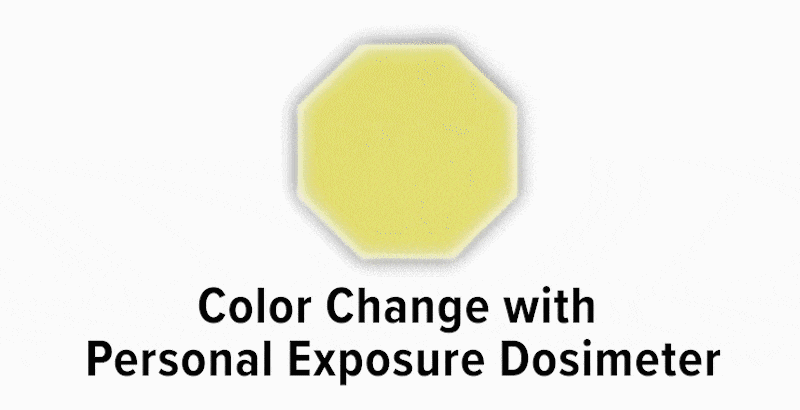
These dosimeter stickers are a great addition to name badges, tags, clothes, as well as any other surface where you want to monitor exposure.
These stickers help stop exposure before any workers or visitors get hurt. The personal exposure dosimeter stickers are especially helpful during the maintenance process or any area where UVC fixtures are used.
Like other dosimeters, the stickers do not work accurately with far-UVC, pulsed-xenon, or LED UVC light sources. It's also important to use these stickers indoors only (they should not be exposed to sunlight) and throw them away after every use.
If you have questions about how to use a dosimeter or finding the right UV product to protect your employees and customers, please do not hesitate to contact us.

